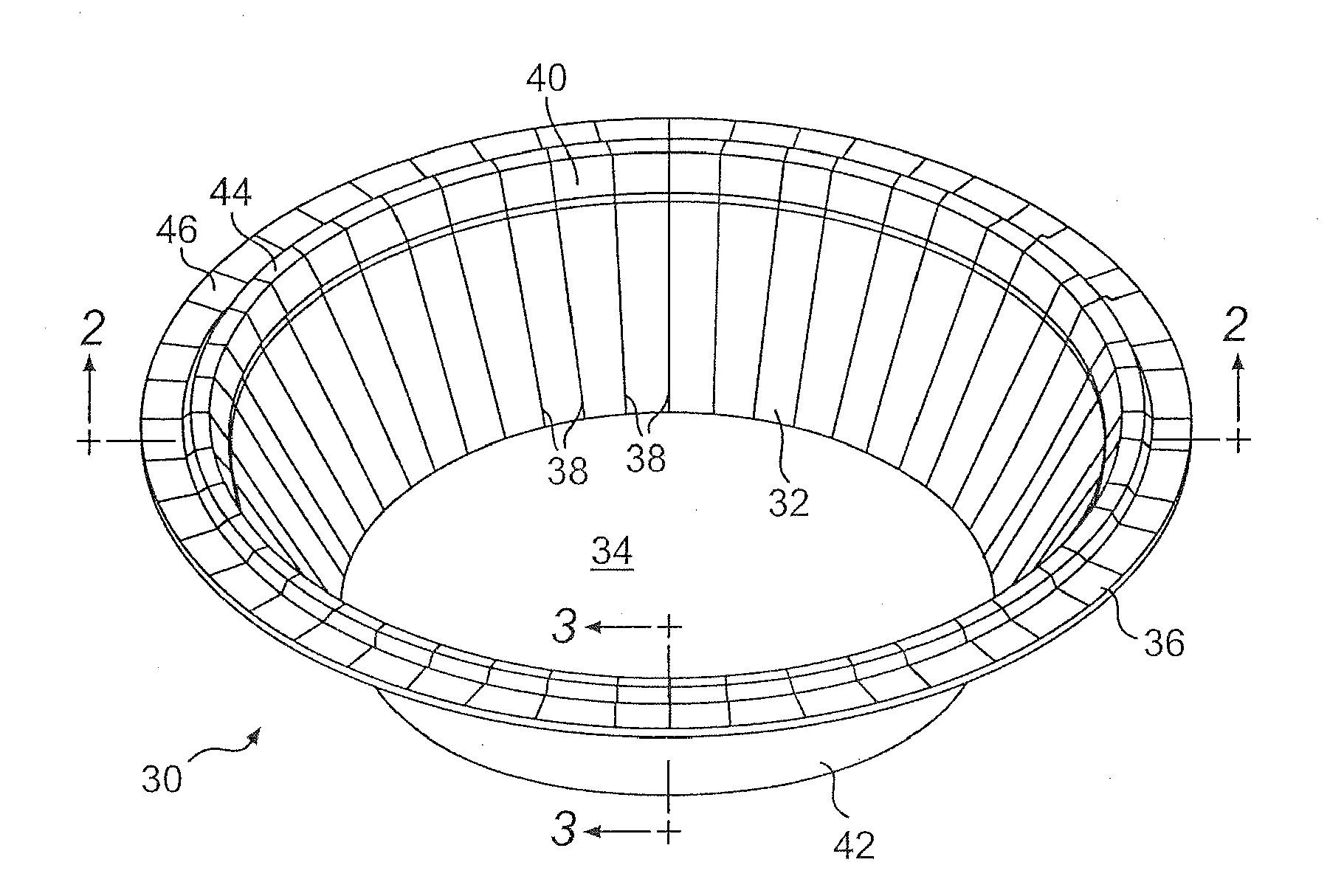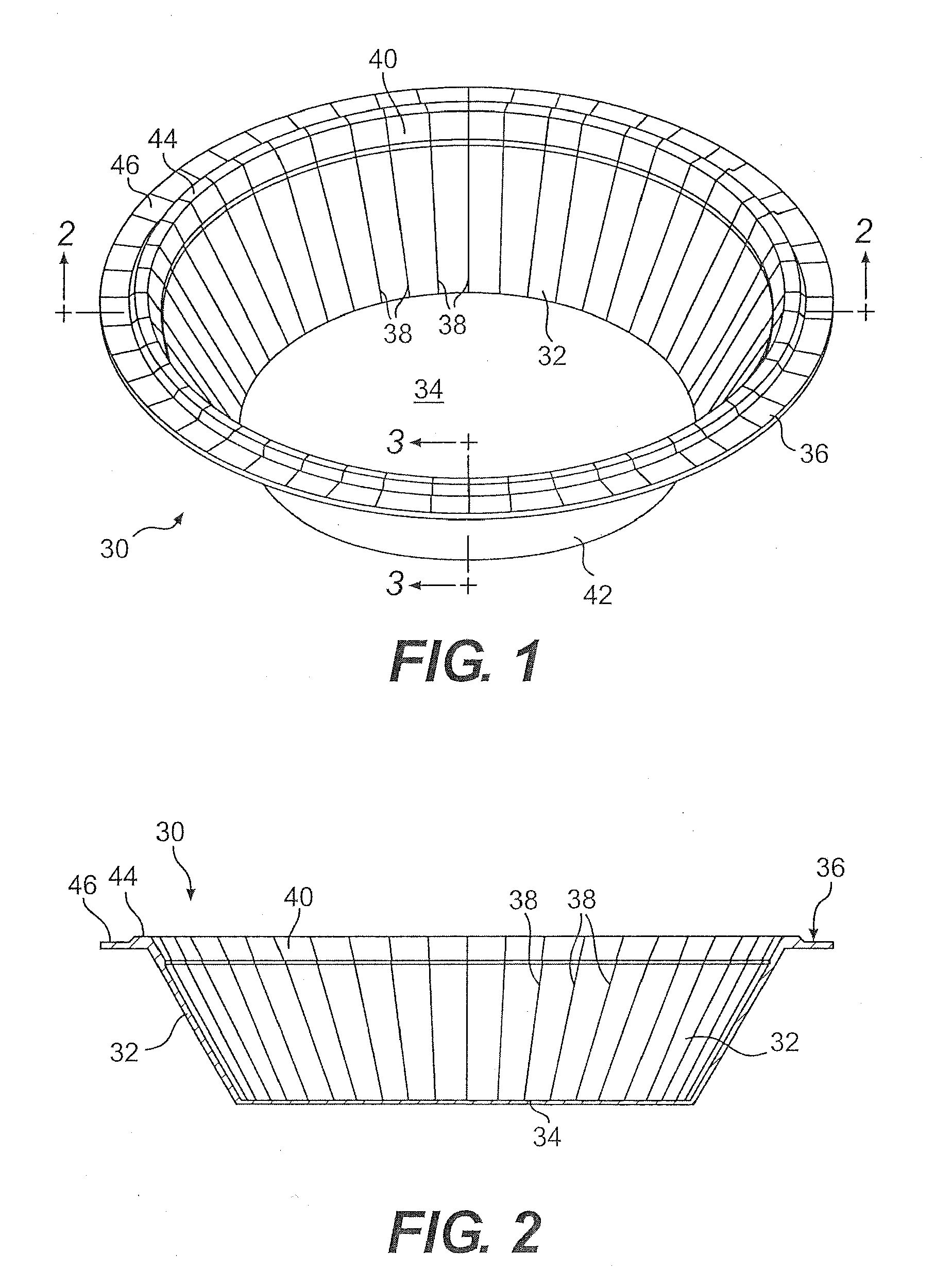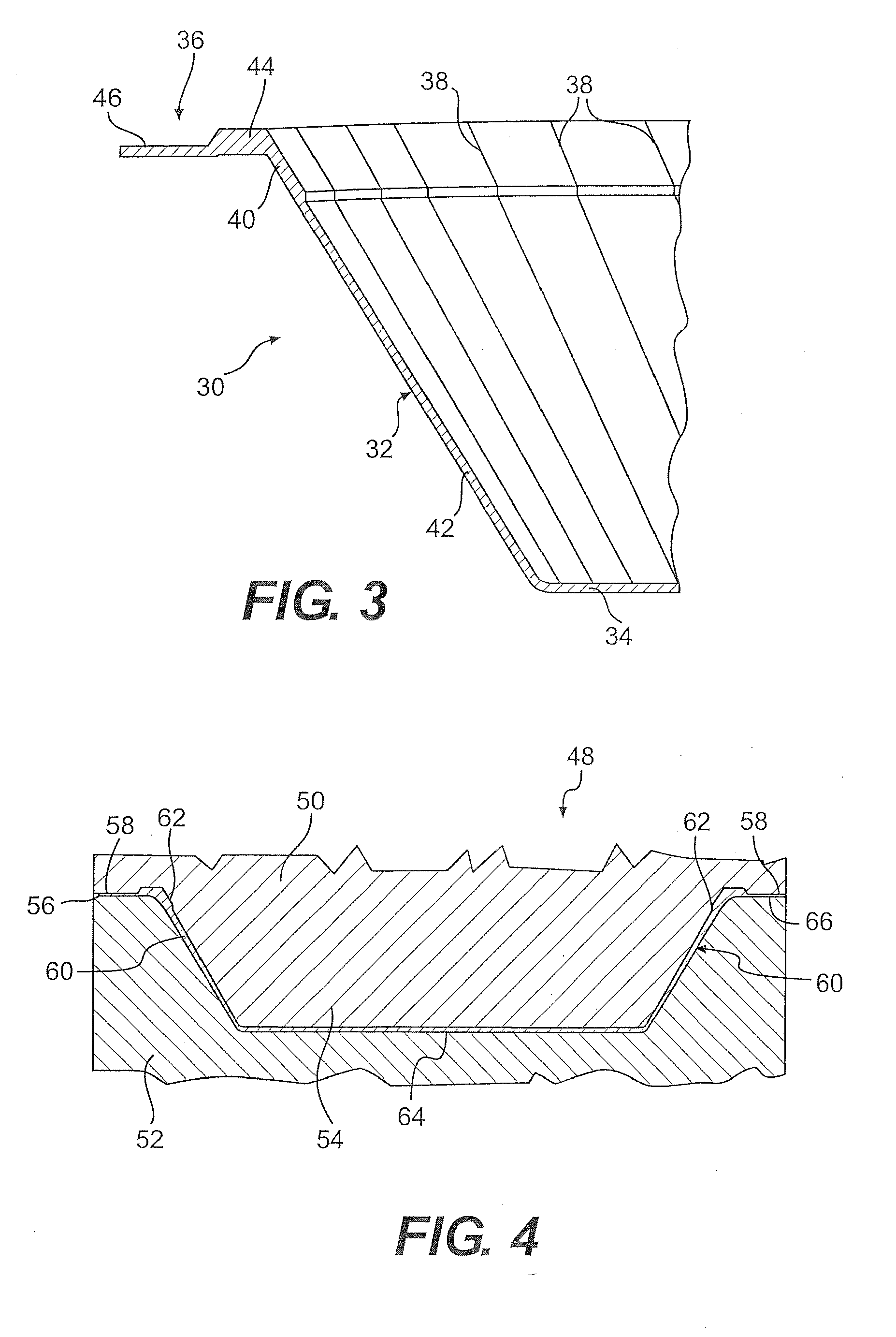Nestable Container With Uniform Stacking Features
a technology of nested containers and features, applied in the field of containers, can solve the problems of uniform rim spacing, and difficult densification of non-uniformly stacked containers, and achieve the effects of facilitating reliable densification, facilitating separation of nested containers, and increasing the effective thickness of the flang
- Summary
- Abstract
- Description
- Claims
- Application Information
AI Technical Summary
Benefits of technology
Problems solved by technology
Method used
Image
Examples
first embodiment
[0090]FIGS. 1-3 illustrate a container 30 having a downwardly tapering frustoconical sidewall 32 that is integrally continuous along its bottom edge with a flat circular bottom wall 34, and along its top edge with a radially outwardly directed horizontal flange 36. The sidewall 32 and the flange 35 have a plurality of radially directed pleats 38. As will be explained in more detail below, an upper peripheral area 40 of the sidewall 32 is relatively thick in comparison to the remaining lower portion 42 of the sidewall 32 to facilitate alignment of nested containers of the same construction. Similarly, the flange 36 has a relatively thick radially inner peripheral portion 44 and a relatively thin radially outer peripheral portion 46.
[0091]The container 30 may be formed from a flat circular blank (not shown) of material, such as paperboard, with the circular blank of material having a plurality of radially directed uniformly spaced score lines formed therein, with the score lines radia...
second embodiment
[0101]FIGS. 7-10 illustrate a container 102. Referring to FIGS. 7 and 8, the container 102 is similar to the container 30 shown in FIGS. 1 and 2 in that it includes a generally frustoconical sidewall 104 that is integrally continuous along its lower edge with a flat circular bottom wall 106, and along its upper edge with a ring-like outwardly directed radial flange 108. Radiating pleats 109 extend across the sidewall 104 and the flange 108. In this embodiment, the sidewall 104 is deformed during the forming process to define an annular recess 110 in the inner surface of the sidewall 104 that is generally V-shaped in cross section, and a generally V-shaped ring-like protrusion 112 in the outer surface of the sidewall 104. The flange 108 is defined by a radially inner upstanding wall portion 114 and a radially outer flat radial ring-like portion 116.
[0102]FIG. 9 illustrates a forming operation of the container 102 in a die set 118. The die set 118 has a forming punch 120 and a forming...
third embodiment
[0104]FIGS. 11-16 illustrate variants of a container 142 and a method of making the container. Referring to FIGS. 11-13, the container 142 is similar to the container 30 shown in FIGS. 1-2 in that it includes a frustoconical sidewall 144 integrally continuous along a bottom edge with a circular flat bottom wall 146 and along a top edge with a ring-like radially outwardly directed flange 148. Radiating pleats 149 are formed in the sidewall 144 and the flange 148 as described in previous embodiments.
[0105]Referring to FIGS. 11-15, with specific reference to FIGS. 14 and 15, the flange 148 of the container 142 includes a plurality of deformations, namely convex hemispherical protrusions 150 extending from the bottom side of the flange 148, and concave indentations 152 defined in the top of the flange 148. The protrusions 150 separate the flanges 148 of adjacent like containers 142 in a nested stack of containers 142. The protrusions 150 are illustrated as generally hemispherical, altho...
PUM
 Login to View More
Login to View More Abstract
Description
Claims
Application Information
 Login to View More
Login to View More - R&D
- Intellectual Property
- Life Sciences
- Materials
- Tech Scout
- Unparalleled Data Quality
- Higher Quality Content
- 60% Fewer Hallucinations
Browse by: Latest US Patents, China's latest patents, Technical Efficacy Thesaurus, Application Domain, Technology Topic, Popular Technical Reports.
© 2025 PatSnap. All rights reserved.Legal|Privacy policy|Modern Slavery Act Transparency Statement|Sitemap|About US| Contact US: help@patsnap.com



